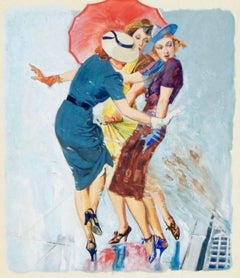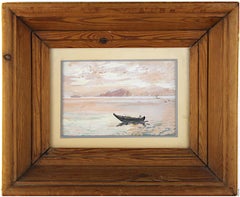Watercolor Figurative Paintings
1930s Watercolor Figurative Paintings
Gouache
1930s American Modern Watercolor Figurative Paintings
Gouache, Board, Watercolor
1930s Watercolor Figurative Paintings
Watercolor, Acrylic, Board
1930s Surrealist Watercolor Figurative Paintings
Paper, Watercolor
1930s Impressionist Watercolor Figurative Paintings
Gouache, Laid Paper
1930s Impressionist Watercolor Figurative Paintings
Watercolor, Laid Paper
1930s Constructivist Watercolor Figurative Paintings
Gouache
1930s Modern Watercolor Figurative Paintings
Watercolor, Ink
1930s American Realist Watercolor Figurative Paintings
Gouache, Board
1930s Watercolor Figurative Paintings
Gouache
1930s Realist Watercolor Figurative Paintings
Ink, Watercolor
1930s Expressionist Watercolor Figurative Paintings
Gouache
1930s Modern Watercolor Figurative Paintings
Paper, Gouache
1930s Watercolor Figurative Paintings
Crayon, Watercolor, Gouache
1930s American Realist Watercolor Figurative Paintings
Gouache
1930s Art Deco Watercolor Figurative Paintings
Ink, Gouache
1930s Cubist Watercolor Figurative Paintings
Gouache
1930s American Realist Watercolor Figurative Paintings
Gouache
1930s American Modern Watercolor Figurative Paintings
Gouache
1930s American Modern Watercolor Figurative Paintings
Board, Gouache
1930s American Modern Watercolor Figurative Paintings
Oil, Gouache
1930s Realist Watercolor Figurative Paintings
Ink, Gouache
1930s American Realist Watercolor Figurative Paintings
Board, Gouache
1930s American Modern Watercolor Figurative Paintings
Board, Gouache
1930s American Modern Watercolor Figurative Paintings
Board, Gouache
1930s American Modern Watercolor Figurative Paintings
Board, Gouache
1930s American Modern Watercolor Figurative Paintings
Board, Gouache
1930s American Modern Watercolor Figurative Paintings
Board, Gouache
1930s American Impressionist Watercolor Figurative Paintings
Gouache, Watercolor, Cardboard
1930s American Modern Watercolor Figurative Paintings
Board, Gouache
1930s American Modern Watercolor Figurative Paintings
Gouache, Board
1930s American Modern Watercolor Figurative Paintings
Board, Gouache
1930s American Realist Watercolor Figurative Paintings
Pencil, Gouache
1930s Watercolor Figurative Paintings
Gouache
1930s American Modern Watercolor Figurative Paintings
Gouache, Oil, Board
1930s Modern Watercolor Figurative Paintings
Tempera, Watercolor, Ink
1930s Expressionist Watercolor Figurative Paintings
Paper, Gouache
1930s American Impressionist Watercolor Figurative Paintings
Gouache, Watercolor, Cardboard
1930s American Impressionist Watercolor Figurative Paintings
Cardboard, Gouache
1930s American Modern Watercolor Figurative Paintings
Gouache, Board
1930s American Modern Watercolor Figurative Paintings
Gouache
1930s Expressionist Watercolor Figurative Paintings
Paper, Gouache
1930s American Modern Watercolor Figurative Paintings
Watercolor, Gouache, Board
1930s Impressionist Watercolor Figurative Paintings
Paper, Watercolor
1930s Expressionist Watercolor Figurative Paintings
Gouache
1930s Watercolor Figurative Paintings
Gouache, Paper
1930s American Modern Watercolor Figurative Paintings
Paper, Gouache
1930s Modern Watercolor Figurative Paintings
Ink, Watercolor
1930s American Impressionist Watercolor Figurative Paintings
Paper, Watercolor, Gouache, Pencil
1930s American Realist Watercolor Figurative Paintings
Gouache
1930s Expressionist Watercolor Figurative Paintings
Paper, Gouache
1930s Modern Watercolor Figurative Paintings
Paper, Ink, Mixed Media, Watercolor
1930s Modern Watercolor Figurative Paintings
Gouache
1930s American Realist Watercolor Figurative Paintings
Gouache
1930s American Realist Watercolor Figurative Paintings
Handmade Paper, Watercolor
1930s Art Deco Watercolor Figurative Paintings
Gouache
1930s Modern Watercolor Figurative Paintings
Gouache
1930s Modern Watercolor Figurative Paintings
Paper, Watercolor




